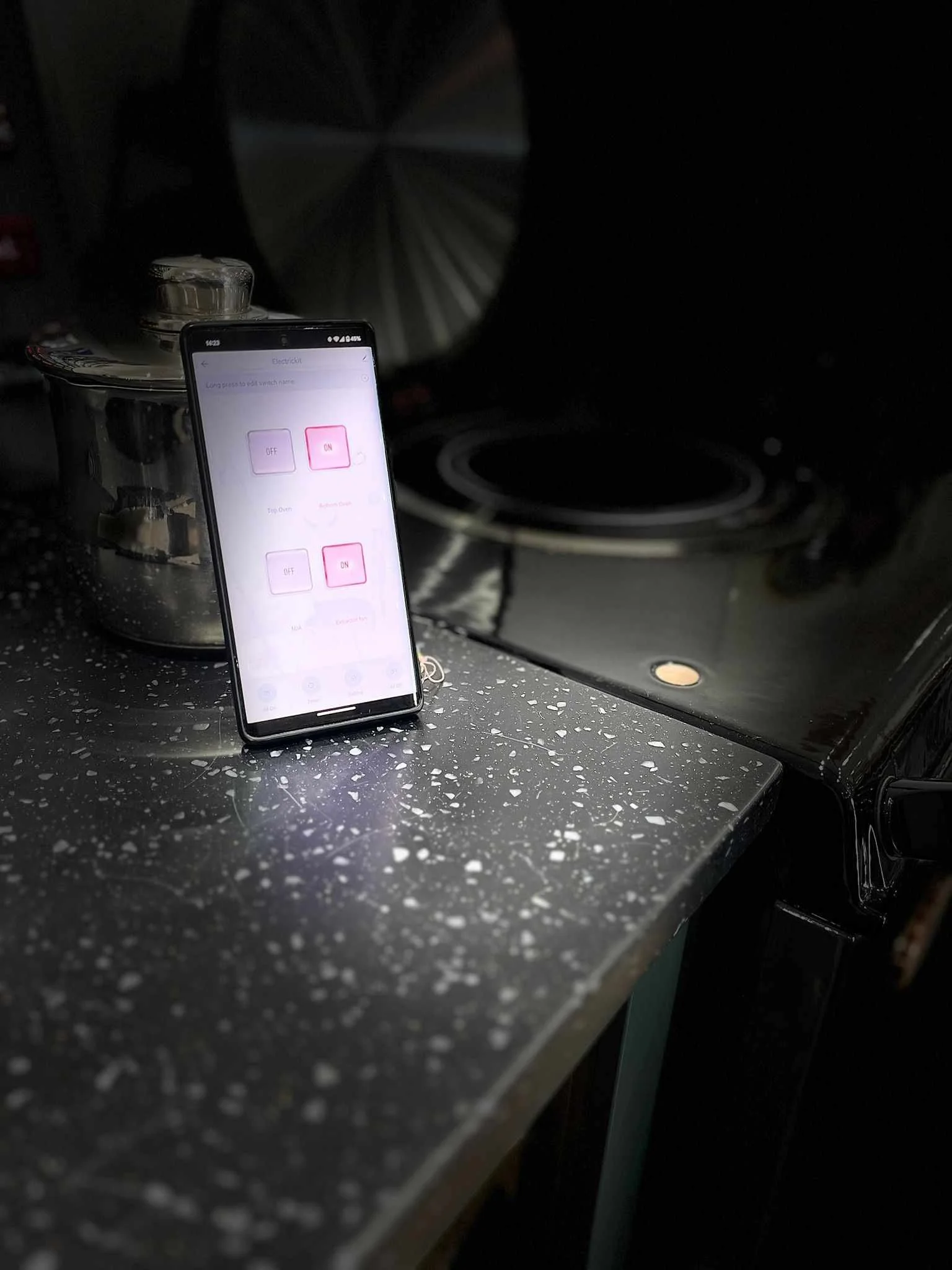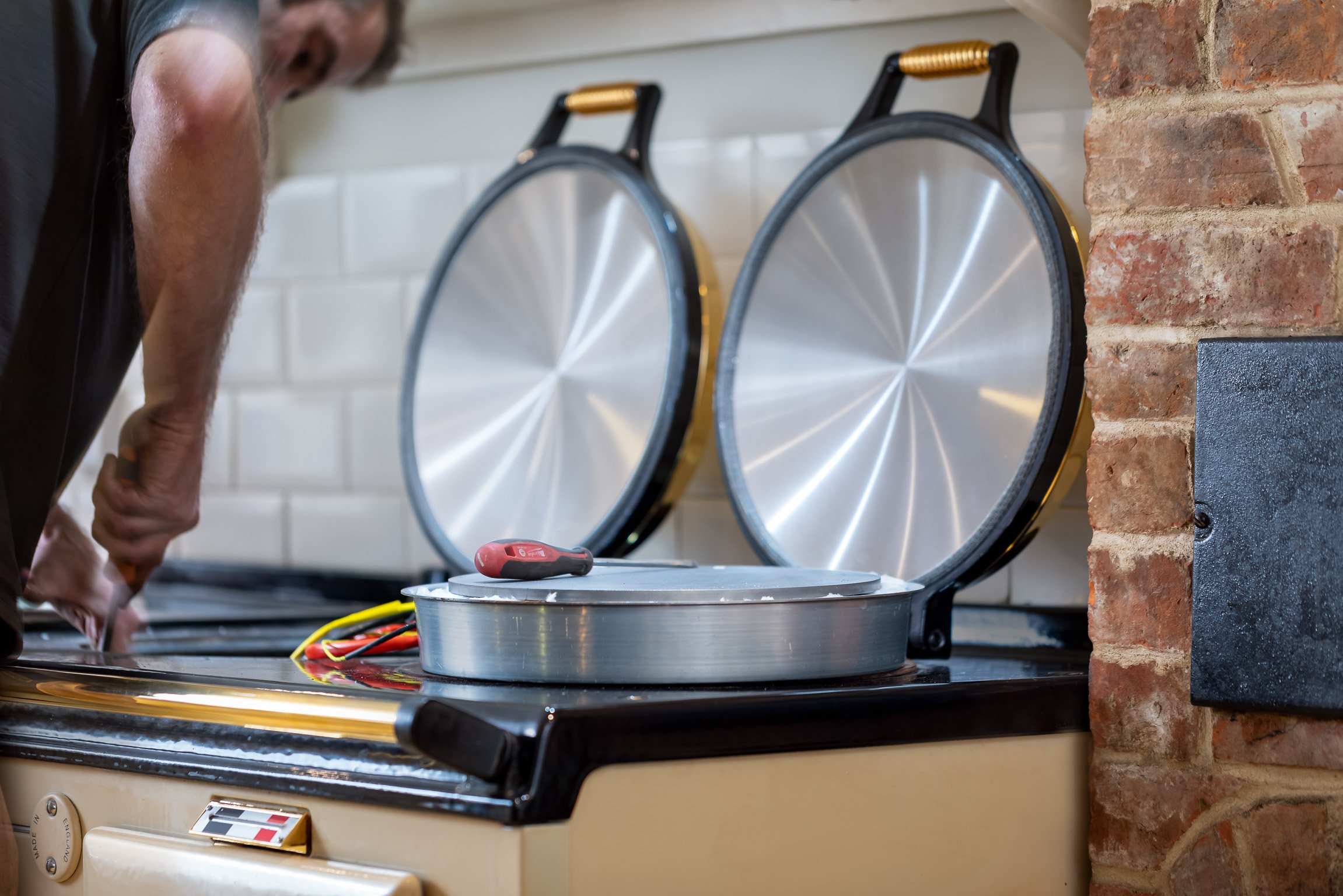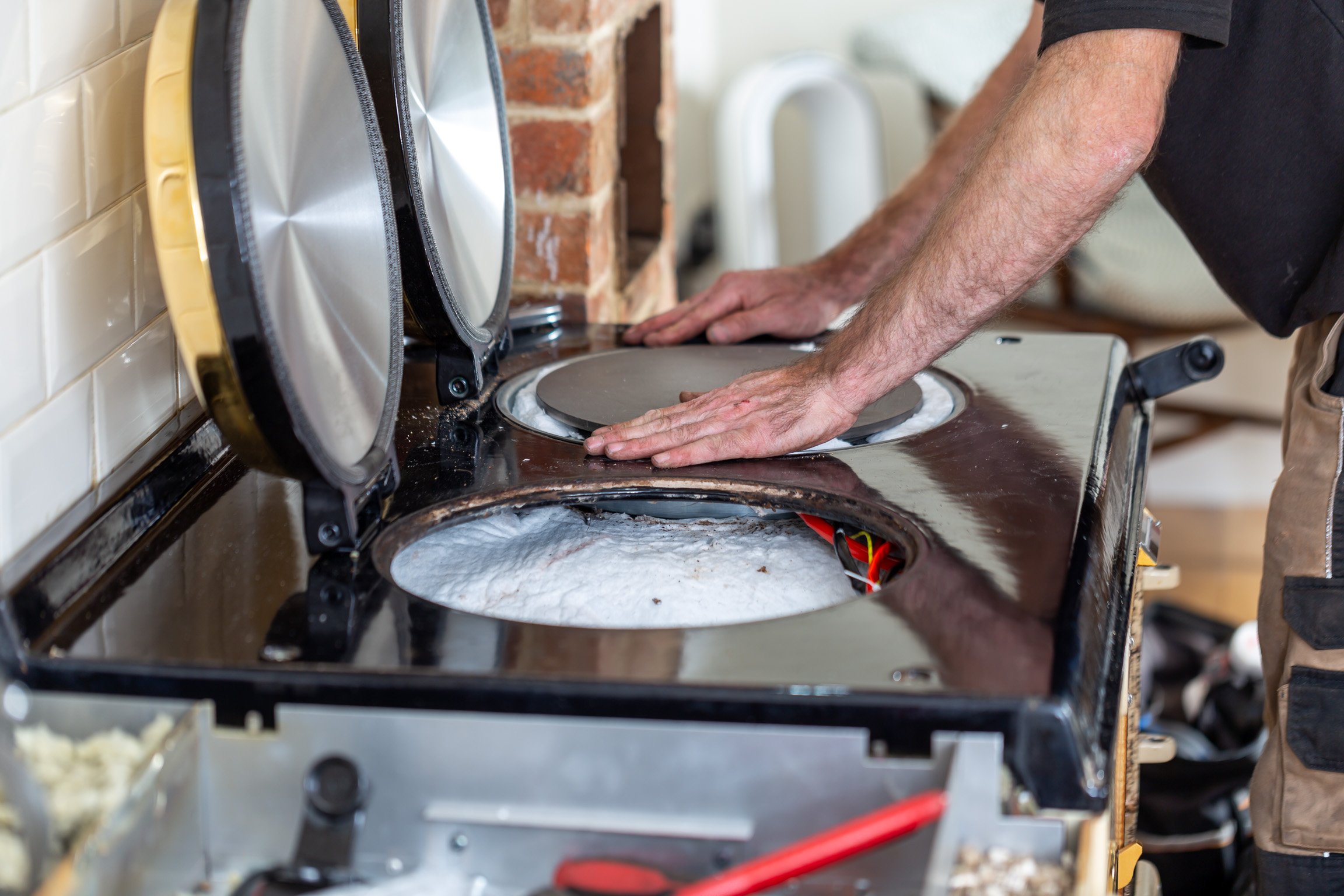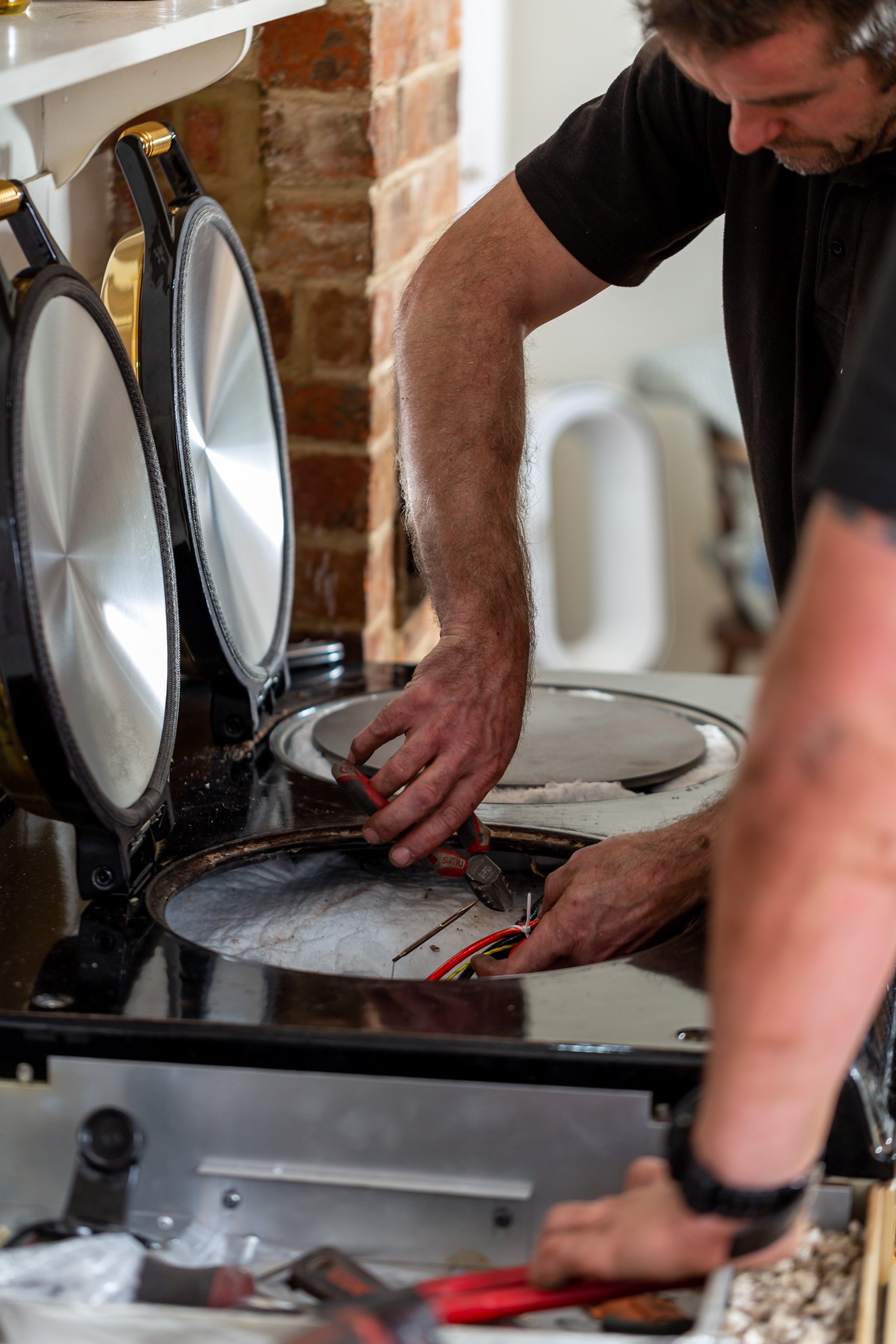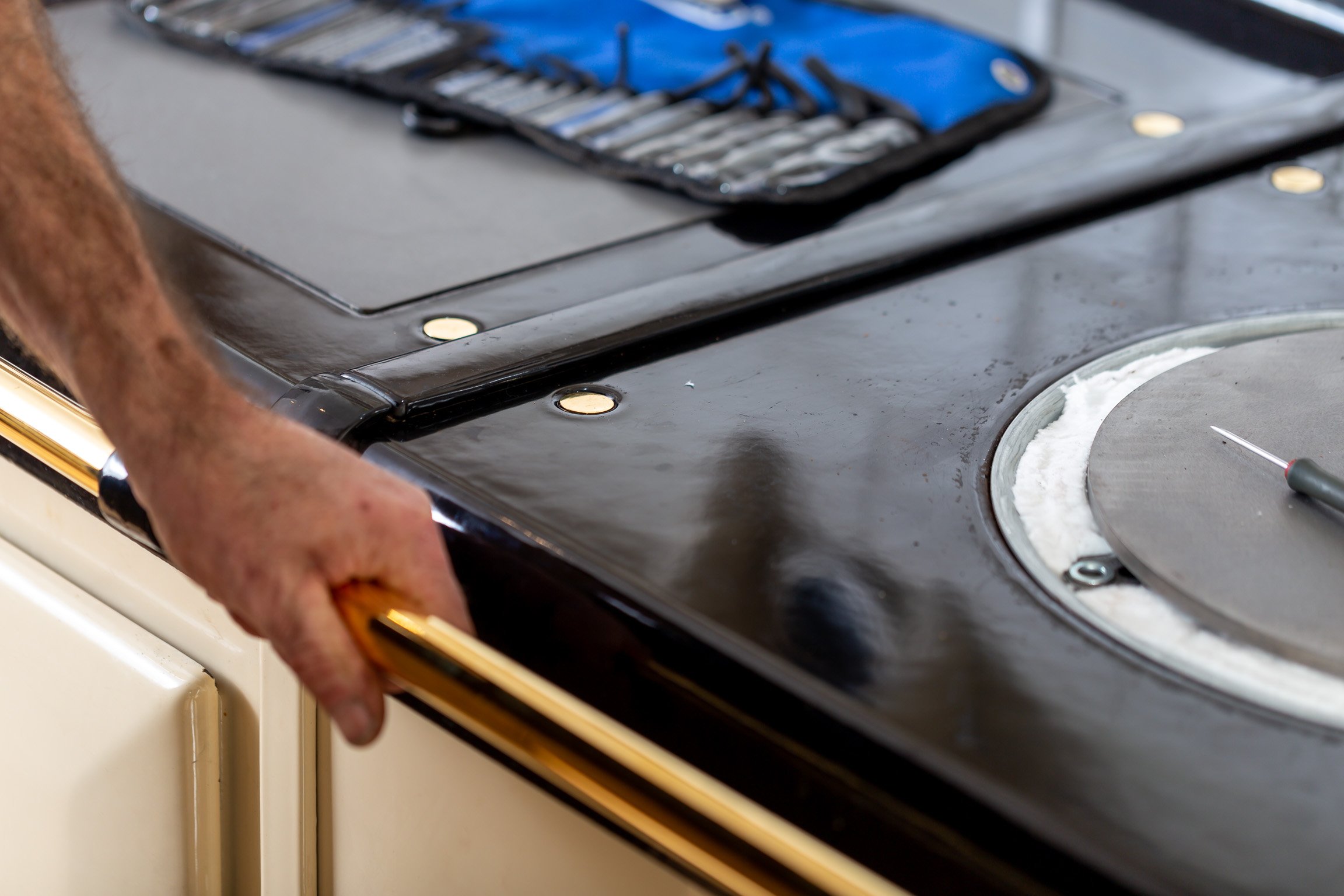4 Oven Electrickit Functionality
A Note on Oven Terminology
The flexibility of Electrickit means that users are no longer confined to the traditional roasting / simmering / baking oven set up. We will therefore now refer to ovens by location rather than traditional terminology.
Roasting oven referred to below as top right (with the potential for roasting, baking or simmering)
Baking oven referred to below as bottom right (with the potential for roasting, baking or simmering)
Simmering oven referred to below as top left or hotcupboard (for simmering temperatures or below)
Warming oven referred to below as bottom left or hotcupboard (for warming only)
Functionality
Key Points:
6 element conversion
Independently controlled hobs
Digital screen dictates top right oven temperature. Bottom right oven runs at 70% of the temperature of the top oven unless additional element is turned on
Additional knob for the bottom right oven means temperatures can now be increased to full roasting level
Hot cupboard independent
Warming plate operates when ovens below are on.
Digital temperature display
Replacement hot spots
Optional induction
(left hand knob become obsolete and is controlled on the hob itself)
Optional integral Wifi
Complete replacement insulation
Controls
Electrickit is controlled via a control panel housed inside the burner door (except in the case of the 30Amp conversion where the control panel cannot be housed internally).
If you wish to use the Aga more traditionally, with the ovens on continually, you may find timers unnecessary. For greater savings or during hotter periods when you wish to have the Aga on only for use, timers can be a useful addition.
Integral Wifi Control
Electrickit is now available with optional integral Wifi control, allowing you to control your Aga remotely via App, or simply programme the Aga to come on as and when required. Each oven can be independently controlled using the App. The timer can however be overridden, allowing you to manually operate the Aga.
Please note the integral Wifi is an on/off system and does not control temperature.
Wifi timers do suffer some issues with connectivity with more complex broadband systems, particularly with Mesh systems- we would encourage you to investigate whether these will be a good fit for your set up.
Ovens
The system is designed to be entirely flexible according to the users’ needs. For most efficient use the Aga should be turned off or down between uses. However many of our customers use their Electrickit Agas more traditionally, leaving the ovens on continually to provide a level of ambient heat and the benefits of traditional Aga use.
The 4 oven Electrickit features a digital screen for the right hand ovens. Up / down switches allow you to precisely select the top oven temperature.
Ovens reach 180° within 48minutes from cold, ovens reach 220° in 61 minutes from cold.
Allow 30 minutes saturation time for baking or more precise cooking.
The bottom oven runs at approximately 70% of the temperature of the top oven. At 230 - 240 c (approx. traditional roasting temperature), the bottom oven will be at 160 – 168c, whilst to achieve a traditional simmering temperature of 120c, the top oven should be run at 170c. The flexibility of Electrickit means a baking temperature or simmering temperature can be achieved in either oven by adjusting the set temperature.
An additional control knob allows you to increase the temperature of the bottom oven to one of 8 settings, up to full roasting temperature. It will however never run at less than 70% of the top oven temperature.
Most users prefer to run the Aga at a set temperature for much of the time – frequently this is cooler than that of a traditional Aga due to cost savings. The Aga will heat up far faster than it will cool down so can be turned up fairly shortly before use but must be given substantial time to cool down.
The hotcupboard (3rd and 4th, simmering / warming ovens) feel much the same as traditionally. A knob with settings 0-8 allows you to select your temperature. For traditional simmering and warming, a setting of 7 or 8 is required. The hotcupboard can however be turned down to enable dehydrating, proving or more gentle ambient heat.
Warming plate
The warming plate is heated, as per the traditional set up, by the ovens below. The warming plate will therefore be hot when the hotcupboard is on and cool when the ovens are cold.
Hobs
The hobs are entirely independent of one another and of the ovens and are controlled by 2 x knobs with 8 temperature settings. Each hob is replaced and comprises a blasted steel hot spot (which looks like an acts like cast iron!) with an element below within a steel casing.
Both hobs have the capacity to reach the same temperature – neither is set to simmering or boiling. When the ovens are on, the right hand hob will reach temperature slightly faster due to the ambient heat of the ovens beneath.
Items cooked directly on the hotplate – toast, pancakes, eggs etc – can be cooked within minutes.
Hobs reach setting 4 (simmering) within 13 minutes from cold.
Hobs reach setting 8 (hard boil) within 19 minutes from cold.
For greatest efficiency the hobs should be turned on only for use. Some users prefer to leave one hob on low continually for convenience, though with the ovens on, the base of the top oven provides an instant “hot plate” whenever needed.
Hobs should not be left on with the lids down above half heat for extended periods. The lids can be left down to speed up heat up, or when cooling down or for short periods, for example to cook an egg. Some users prefer the fail-safe lifting of the lids whenever the hobs are on to avoid forgetting to lift later. Remember the ovens will not lose heat when the lids are lifted, due to the independent elements.
Induction option
For even more efficient cooking and to entirely eliminate heat up times, an induction upgrade is available for the left hob. The glass induction plate replaces the traditional cast iron hot plate and is concealed by the lid so the Aga looks just as it did traditionally.
There are 2 induction options available - a 1.6kw induction or a 3kw induction.
At Rural Ranges in Dorset, we recommend the 1.6kw induction in almost all cases. Find out more about the induction hob upgrade here.
Ambient Heat
The ambient heat provided by Electrickit is likely to be around 65-70% of that offered by a traditional Aga run at the same temperature. The superior blanket insulation allows less heat to escape, whilst the location of the elements above, below and between the ovens directs the heat exactly where it is needed. In a traditional set up, heat is created by the burner, moved through the barrel and across the front of the Aga, moving down from the roasting oven. In Electrickit, this movement of heat is reduced.
The hotcupboard element is located to the right of the simmering oven. The result is that, when both sets of ovens are on, all areas of the Aga feel warm to the touch, with the oven areas still holding substantial heat. Although when the hobs are off, the top of the Aga will feel cooler to the touch than traditionally, there is still sufficient heat from the ovens below to undertake traditional Aga tasks such as drying, yoghurt making and clotted cream making.
Get more Details:
Electric Conversions • What is Electrickit Aga Conversion • Functionality How Electrickit Works • 3 Oven Electrickit Functionality • 4 Oven Electrickit Functionality • 3 Oven Electrickit • Different Flue Types for a Gas AGA • How To Use Electrickit Aga
In the kitchen of one of our recent 4 oven Electrickit conversions, the canines of the family still love their Aga!



